Picking just a few companies to present them as good SaaS content marketing examples was not an easy task. There are so many good examples out there, that this list could go on forever, but for now, let’s focus on 4 companies that really stand out.
- Moz
- Hubspot
- Shopify
- Mailchimp
Let’s give a quick overview of who these companies are and what they do. Moz is an SEO (Search Engine Optimization) company, whereas Hubspot sells CRM solutions. Shopify helps vendors build and manage their online store and Mailchimp is used for group mailing and newsletters.
It is interesting to notice that all these companies promote a SaaS product, only in different industries.
Before we dive into the analysis of each of these SaaS companies, let’s go over some basics.
What Is SaaS Content Marketing?
You might have heard about the marketing funnel. It is a simple tool that we use in marketing to locate the customer during his journey. Mapping out the customer journey helps us understand where a specific audience stands and how to better relate to them.
There are three main stages in the funnel: top, middle and bottom. Other names that are often used to refer to the three stages of the sales funnel are: problem, solution and product.
At the top of the funnel, the buyer enters the funnel with a specific question, or problem they want to address. Once they know how to solve this problem, they’ll start looking for a solution and move down to the middle of the funnel. Finally, they’ll be able to look for a product that should help them solve their pain point.
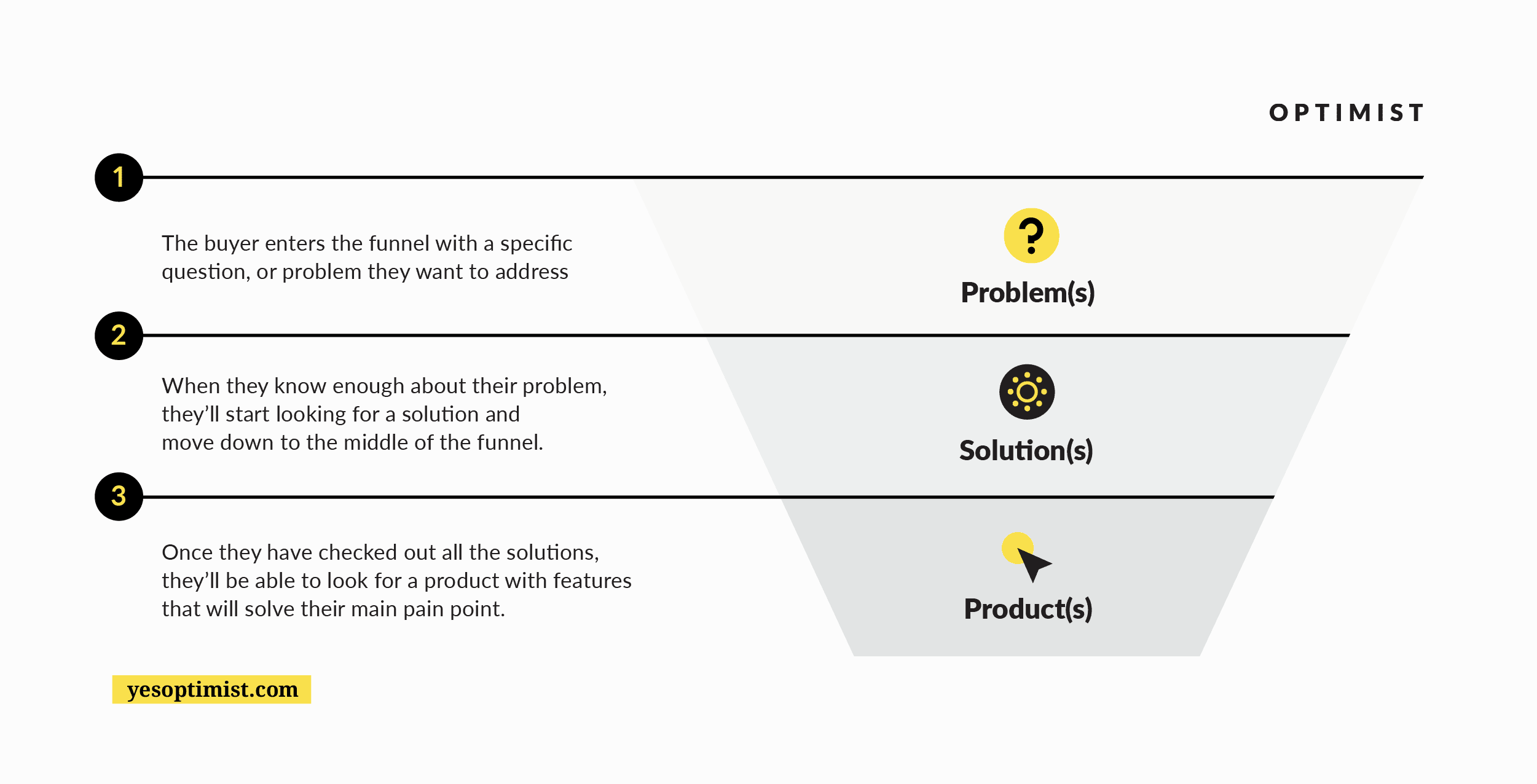
Thanks to all the marketing channels that we have at our disposal, it is possible to attract new leads, engage with potential customers and increase conversion rate at each stage of the funnel.
This is done by creating engaging, relevant and compelling content pieces. High-quality content can serve several purposes. For example, it can help your visitors but at the same time, demonstrating that your brand is the best at fixing their pain point.
Check this out if you want to learn more about How to Build a Growth-Focused Search Strategy for Every Stage of the Funnel.
Needless to say, SaaS content marketing has a very important role to play in a company’s overall strategy. Content marketing will have an impact on a brand’s identity, through publishing of videos, photos or by posting content on social media.
SaaS content marketing is also frequently used to improve a site’s authority and bump up overall growth or traffic on the landing page, for example.
Wondering how content marketing drives organic traffic? Take a look at this SEO for Startups article.
However it is not always easy to produce high-quality content that is engaging and covers topics that your audience really needs to hear about.
The SaaS content marketing examples we decided to present to you in this article are all very interesting to learn from because each one of them uses a different content marketing method to generate more traffic to their site and improve brand awareness.
Some of them keep it simple and straightforward whereas other companies get really creative and come up with some very unique content ideas. Overall, these SaaS content marketing examples show a pretty accurate view of the different ways to develop and maintain an efficient SaaS content marketing strategy for your inbound marketing strategy.
In 2021, according to Statista, there were 25,000 SaaS companies around the world. At that time, BusinessWire declared that the world’s SaaS market size was estimated at $272,49 billion and the Compound Annual Growth Rate for SaaS industry was estimated at 11,7%.
This tells us that SaaS, and particularly B2B SaaS, is one of the most attractive and growing industries. The combination of SaaS and content marketing can show impressive results.
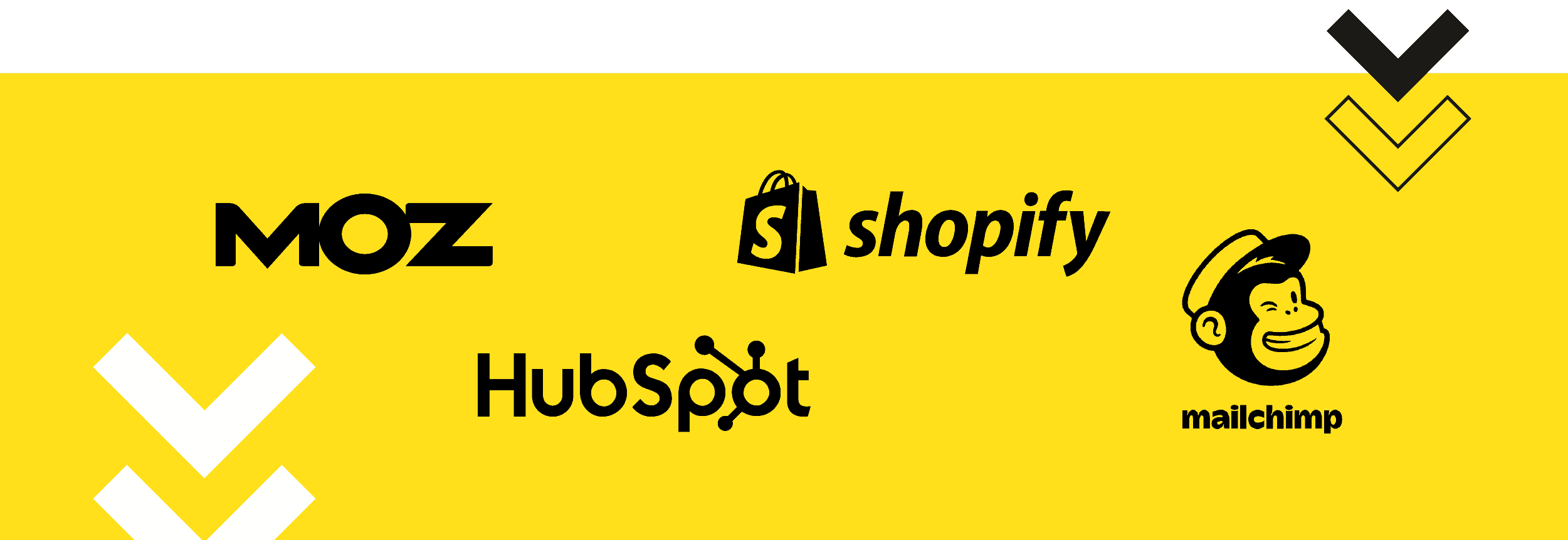
So let’s dig into the strategies of Moz, Hubspot, Shopify and Mailchimp and find out what their magic formula is when it comes to SaaS content marketing.
4 Inspiring SaaS Content Marketing Examples
Moz
Moz is a popular all-in-one SEO software suite. It offers a variety of tools to improve search engine visibility. Some of their most popular features are the link explorer, the keyword explorer and the rank tracker.
Moz is a very good example for content creation. First of all, they produce regular content, but they make sure not to overwhelm their visitors.
As you can see when you log onto their blog homepage the display is very simple and not overloaded with several columns or pop-up windows.
All the articles are organized by category, it is easy to click on the Explore by Category drop down menu list to select the topic you are the most interested in.
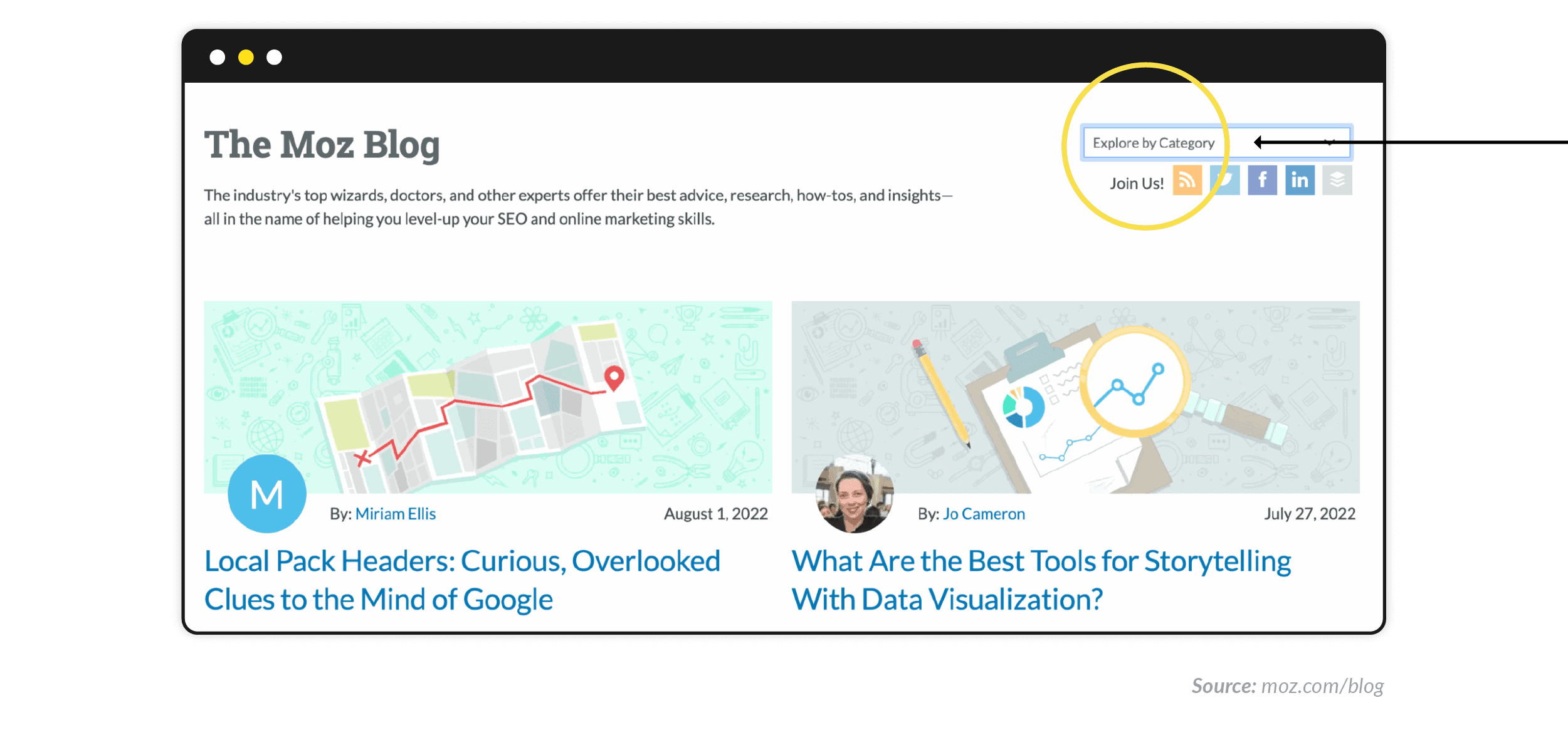
This categorization is a good way for users to keep their screens free from the topics they are not interested in. It is a good point in terms of user experience. A visitor can go right to the topic they are interested in and save time.
It is also an excellent way for building and improving a site’s authority. Because in fact, none of these pieces of content lie alone, they are all interconnected.
Rather than writing a super long, and probably boring article, Moz chooses to split every complex topic into smaller pieces of content easier to digest.
Besides, it helps the reader explore the content freely, in search of answers for their specific pain point rather than following whatever route has been imposed on them.
Moz also takes its audience into consideration, which is another key to success. As Rand Fishkin, founder of Moz puts it:
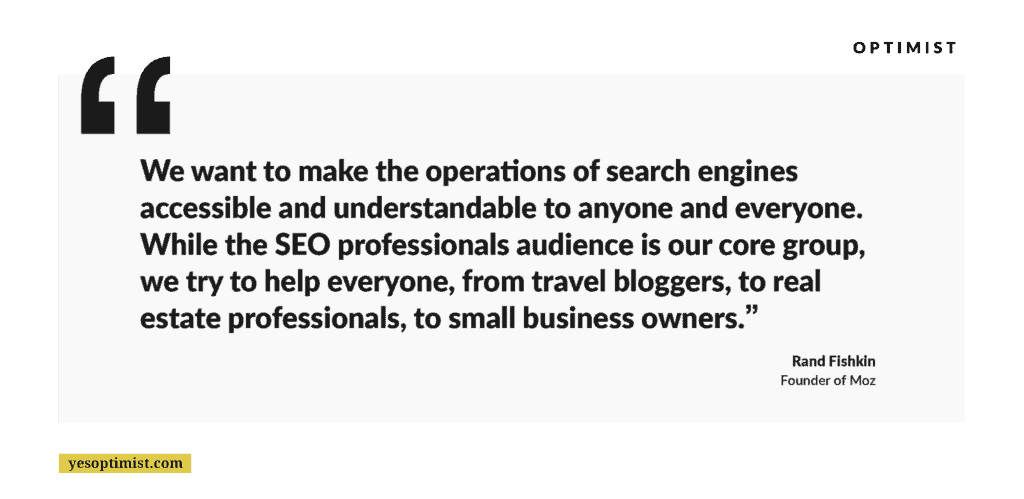
But one of the most popular content marketing strategies adopted by Moz are their Whiteboard Friday videos.
The concept is pretty simple, but very efficient. Once a week, Moz explores complicated topics and presents them in a video. The video features Moz and a whiteboard that he uses widely to explain and detail complex notions.
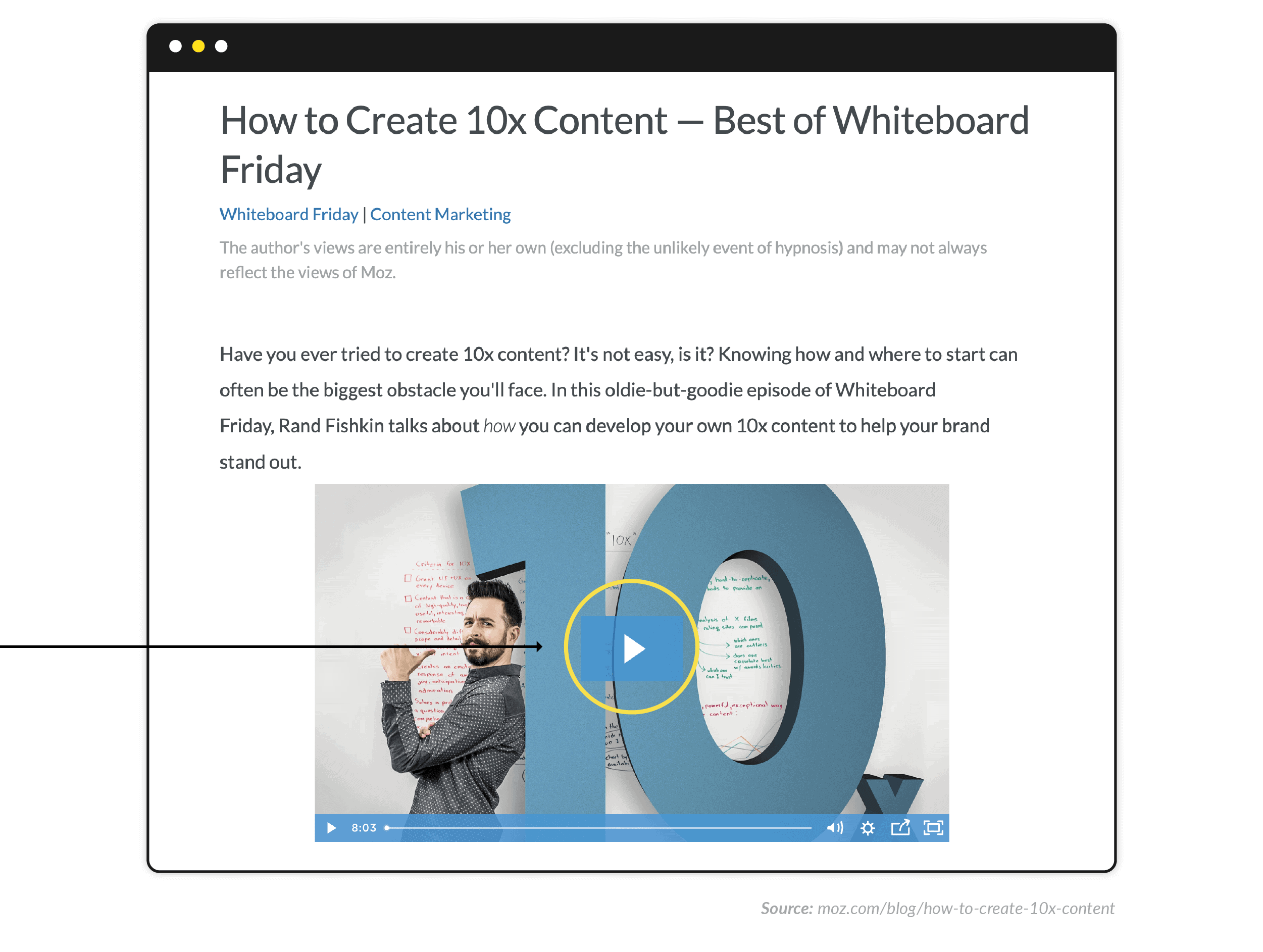
These videos are alway placed at the beginning of the written article. So it’s really up to the reader whether they want to read the whole article, and/or watch the video.
The text and the video formats are complementary and can relate to different kinds of people. It is also an excellent way to build brand awareness, by featuring real faces, which will undoubtedly increase the trust users have for the company.

Hubspot
Hubspot’s site generates millions of unique visitors every month. Even though Hubspot may have to curate content for a wide variety of audiences, they still manage to nail it. But how?
First of all, thanks to the segmentation of their blog. Whether you’re part of the sales team or a manager in charge of a marketing team, you can choose to be directed to content written exactly for the type of audience that you are and represent.
This organization by hub makes it easier for new visitors to find relevant and useful pieces of content.
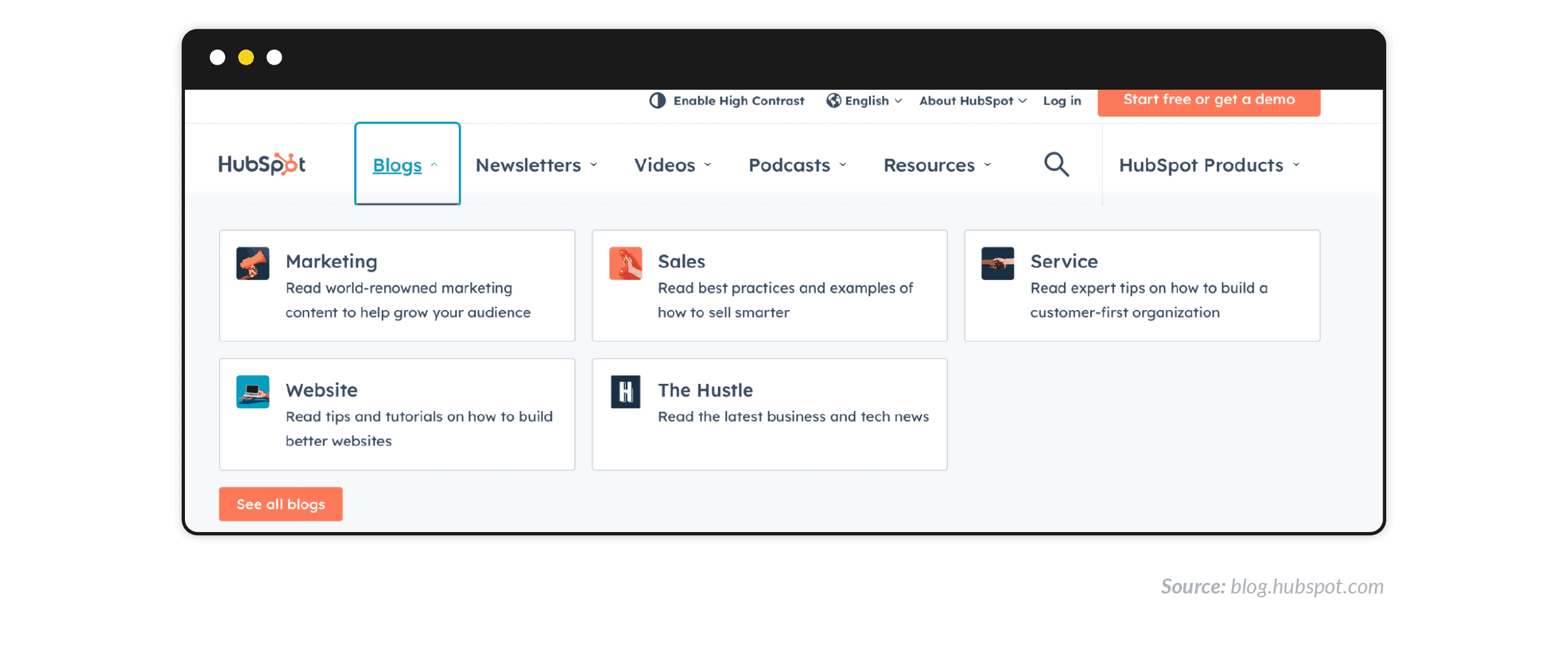
But the best part is that these segments are also aligned with their core product offerings. Meaning that they can easily nurture leads throughout the sales funnel by offering similar funnel content at the end of each article.
Because nothing beats high value content with a real positive impact for the reader. And Hubspot has also got that covered.
In an interview at IMPACT, HubSpot founder Dharmesh Shah confirms this.
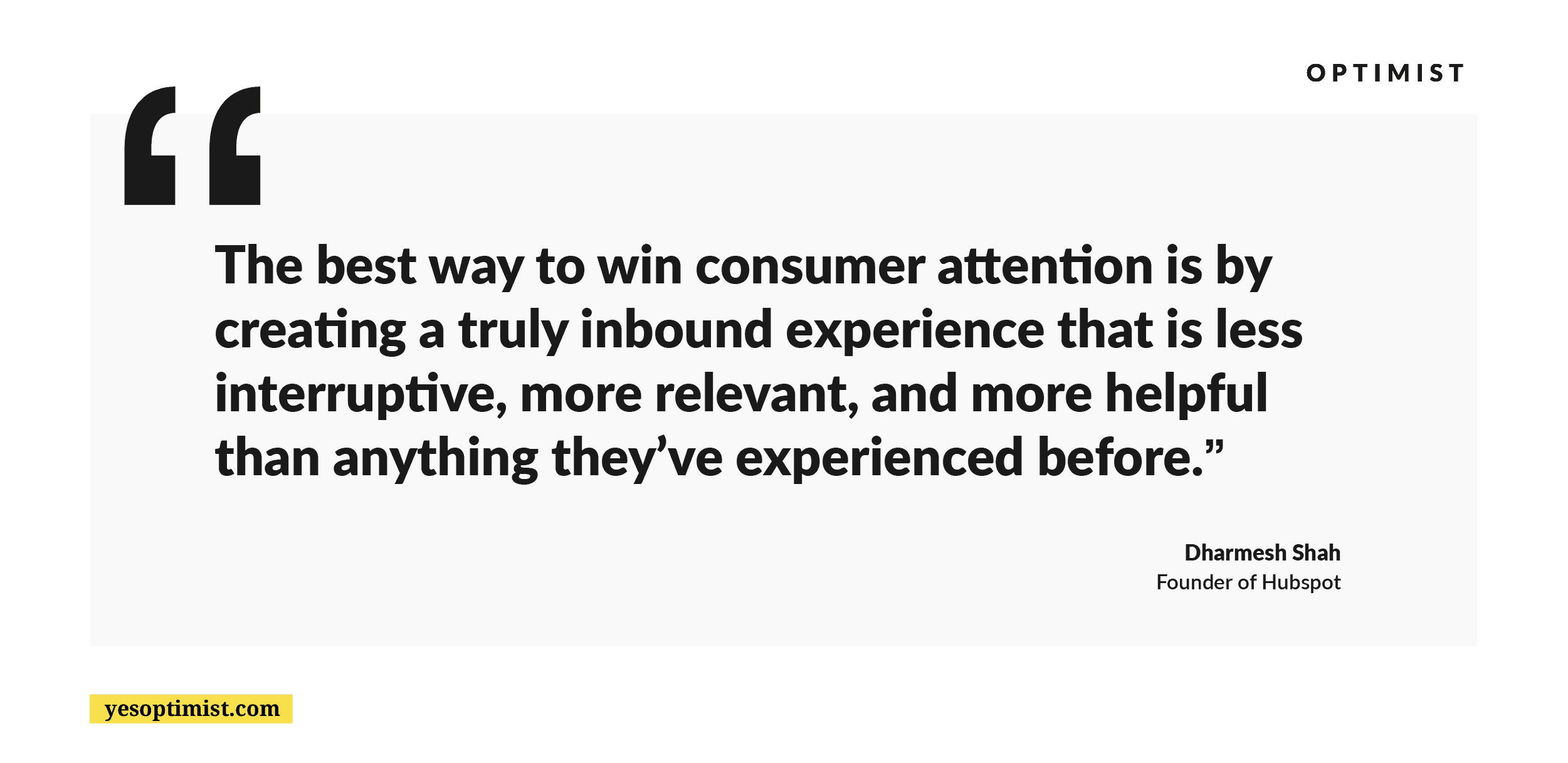
The articles contain educational content, but they are also full of calls to action (CTA) buttons. Each one is placed strategically to encourage visitors to sign-up or download some templates turning them into a lead and a potential buyer.
A CTA can take several forms, it can be a form to fill or simply a button to click. The most important thing is that it pushes the reader into taking action with your site. This interaction will usually reflect the visitor’s interest.
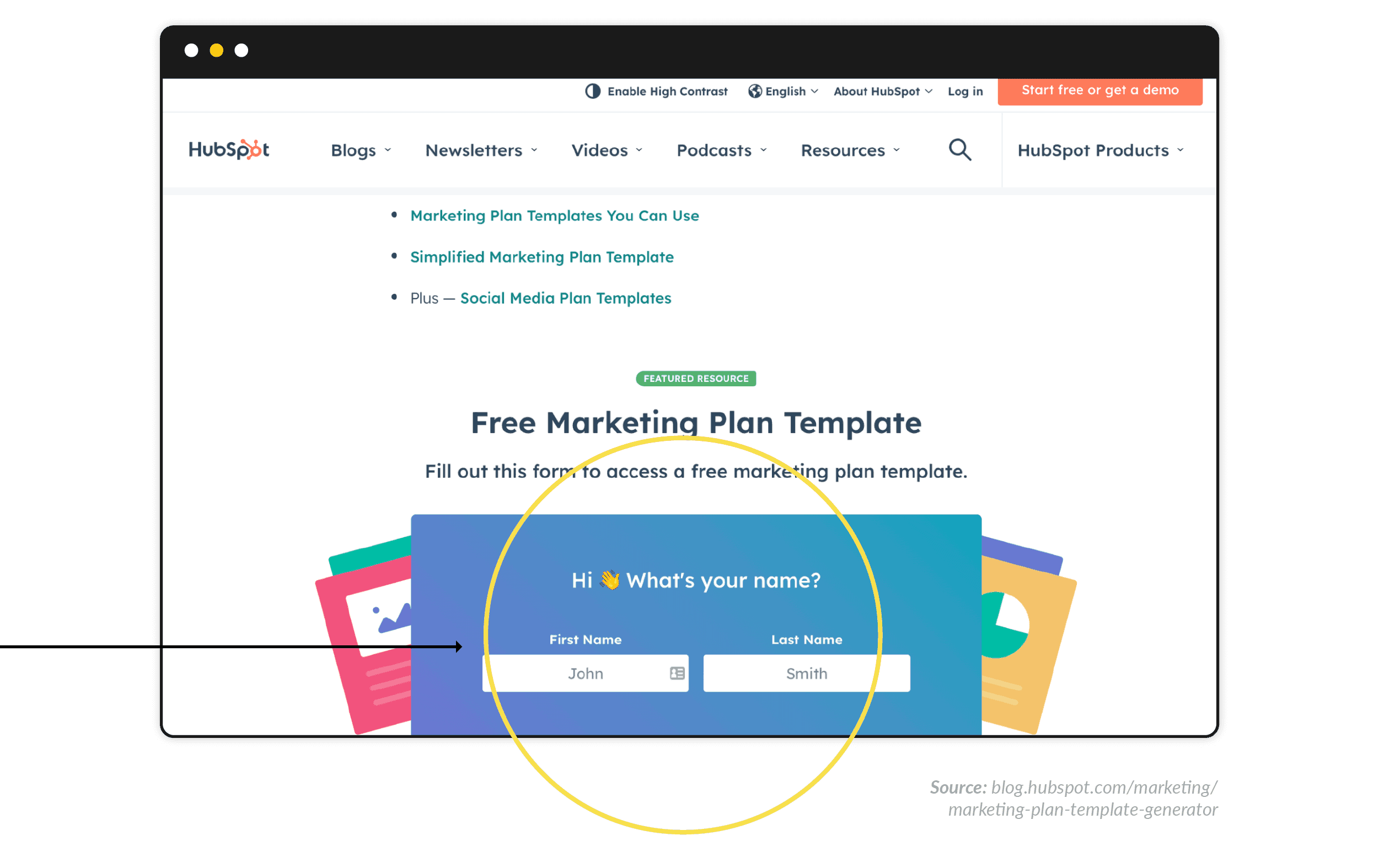
For brand awareness Hubspot has developed a very clever tactic. The company provides free certifications, and badges that can be added to LinkedIn, therefore using their graduates’ LinkedIn profiles to promote the Hubspot brand and drive brand awareness.

Shopify
Shopify is one of the most important SaaS brands and a leader in the world of e-commerce. According to SimilarWeb, they are the 8th most popular business service site in the United States. Their target audiences are ecommerce owners and marketers.
Shopify, when it was first created, managed to identify precisely their audience’s pain points, thanks to an extensive keyword research process. They then managed to create several pieces of content to answer each of their users’ pain points. This whole process allowed them to own most of the ecommerce and marketing field related keywords.
But they didn’t stop there. They carried on posting content everyday like blog posts, courses, video content, podcasts and resources to always stay in a good position.
Every single piece of content Shopify has published has helped them take control over very important keywords, helping their user answer all their questions therefore pushing their brand awareness to a very high level.
This is exactly what Tobi Lütke, founder and CEO of Shopify, has been saying from the beginning.
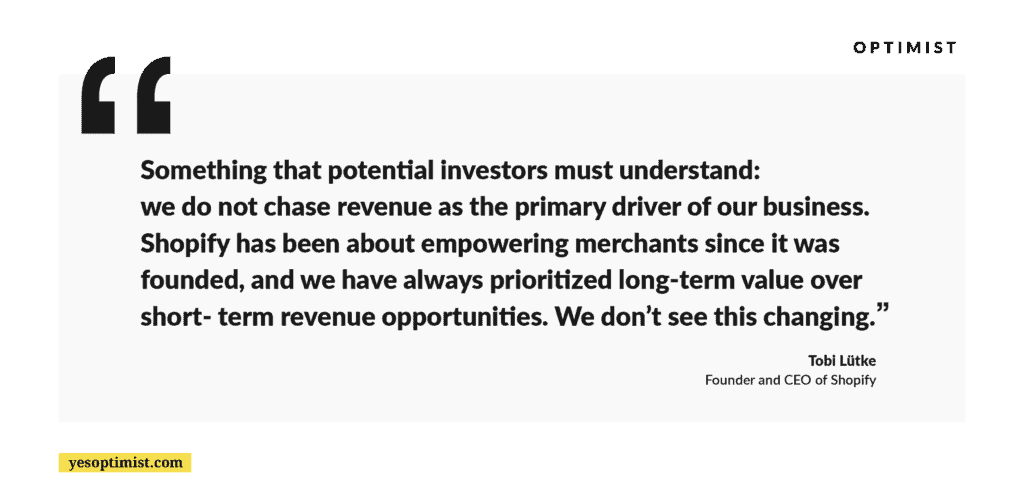
It has come to a point nowadays when any ecommerce owner looking for information knows that they can go to Shopify’s blog and find relevant resources.
The blog is organized in 3 different categories, addressing very specific audiences, merchant, retail or enterprise within the online retail microcosm. This makes it very easy for the users to find the information they need.
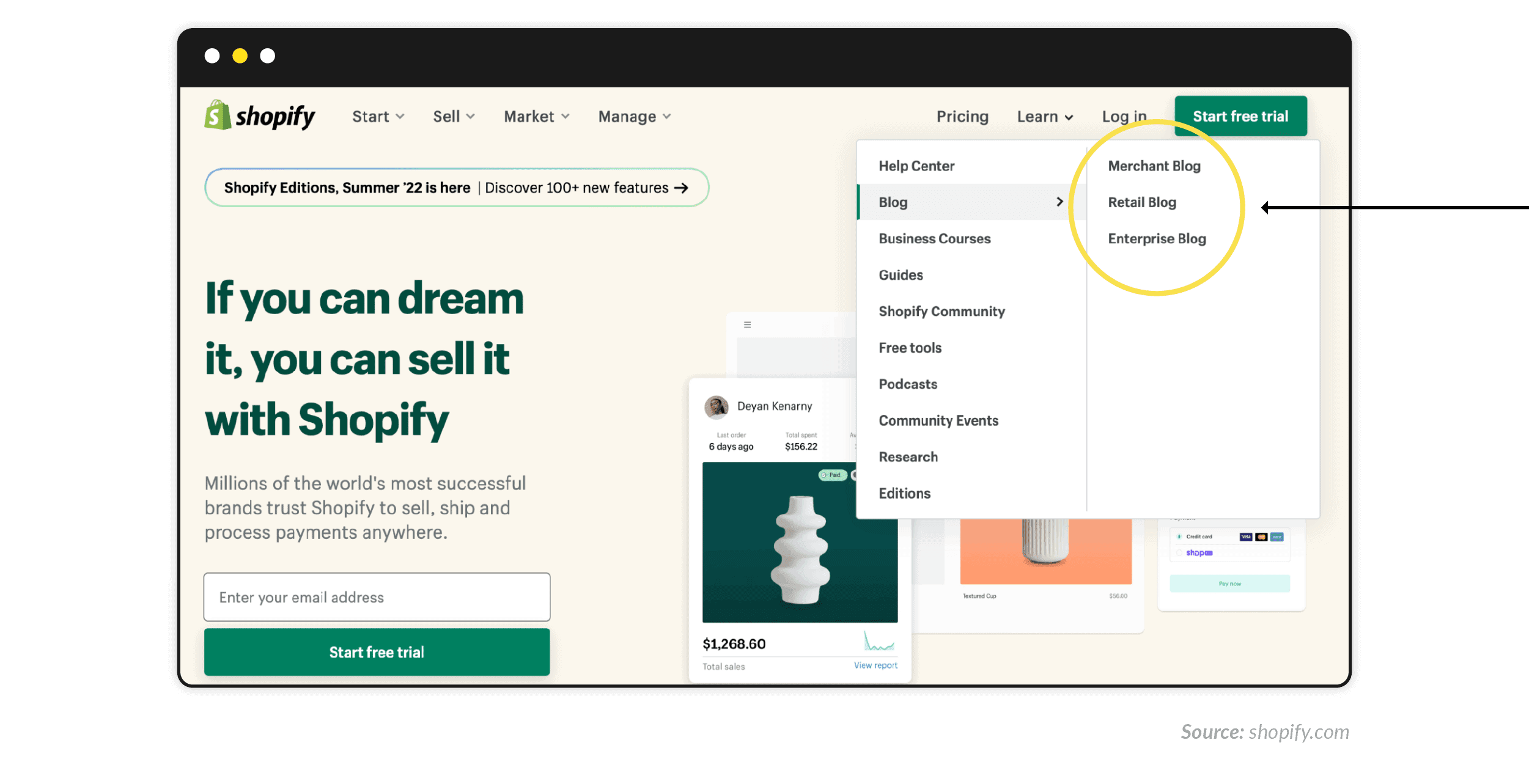
In other words, focus on the right audience, give them useful content, and it will be a win.

Mailchimp
Mailchimp started in 2001 as an email marketing software platform. They have now grown into a full-stack marketing platform.
To achieve such fast success, the company has relied over the time on several content marketing techniques.
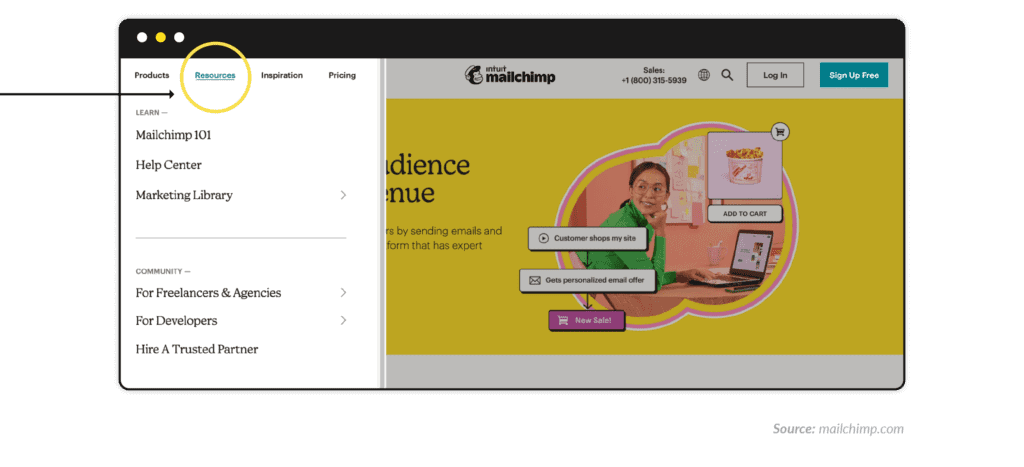
They have created a whole resources section targeted for small businesses. They also provide step-by-step tutorials for any newbie who wants to get started on Mailchimp. These tutorials don’t just cover the basics but can also be very useful for anybody who wants to learn how to master Mailchimp’s product, like freelancers or developers.
They have also published a marketing glossary. And more recently they also shared their internal style guide.
For a big successful company to share their secrets is quite unusual. But this was actually the trigger to draw the attention towards them. Other companies, enterprises or startups started using their style guide, linking their content to Mailchimp’s resource page.
Ben Chestnut, Co-founder and CEO at Mailchimp, defender of simplicity once said:
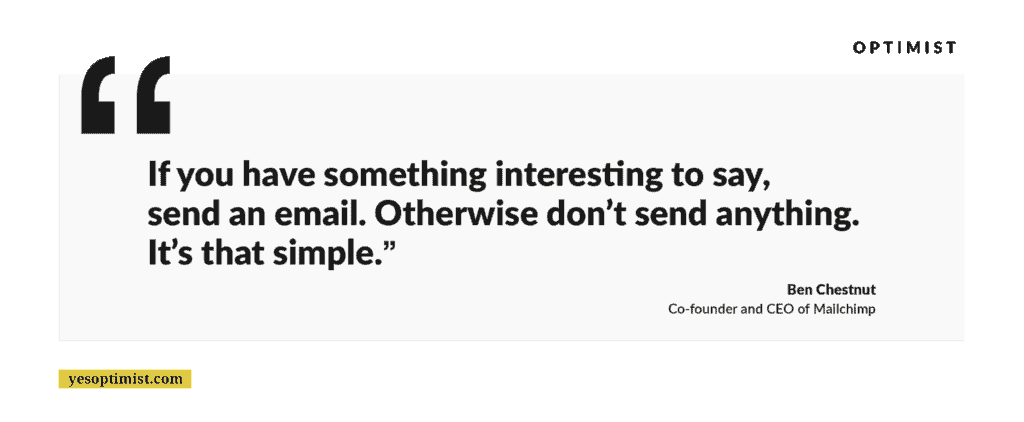
Mailchimp is also very famous for their colorful and attractive ads but always extremely relevant with a short but very clear message. Publishing original content is another excellent way to get the public’s attention. I can also be a good way to develop brand awareness and improve customer experience.
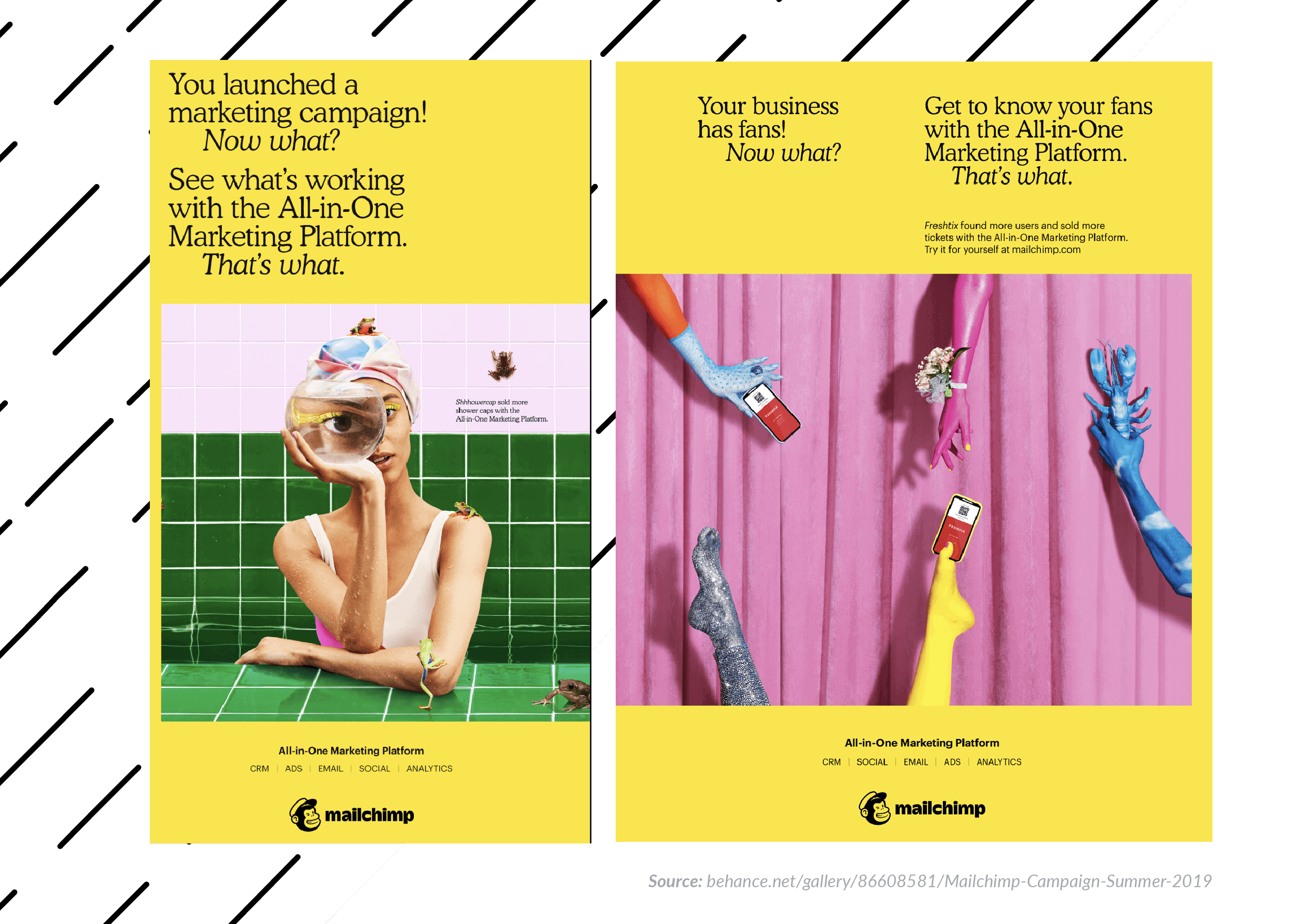
There is also another positive effect of going for fun, likable and high-quality content. Once it’s out there, a lot of companies inspired by the resources offered on Mailchimp’s website, have added a link back to the original article or resources, driving loads of backlinks with hardly any effort. It is also a very clever way to obtain referrals without asking for anything.
Mailchimp also has a sweet spot for creating highly original videos. They stick and people remember about them. It is also a good way of connecting with the public and improving traction by offering them to go on a journey with you to become more familiar with your brand and product.
The common element in Mailchimp’s content is that the message is clear and simple. No fuss, it goes to the point, and that is what we love about them.

What Can We Learn From These SaaS Content Marketing Examples?
The main takeaway here is that content marketing can cover a wide range of marketing techniques and material and deal with the marketing funnel at all the stages. From lead generation, to warming up prospects, generating traffic and boosting brand awareness.
All these SaaS content marketing examples show us that there are several ways of promoting your business and making more money.
Let’s see what are the important steps we can extract from these examples and pinpoint them down in this list.
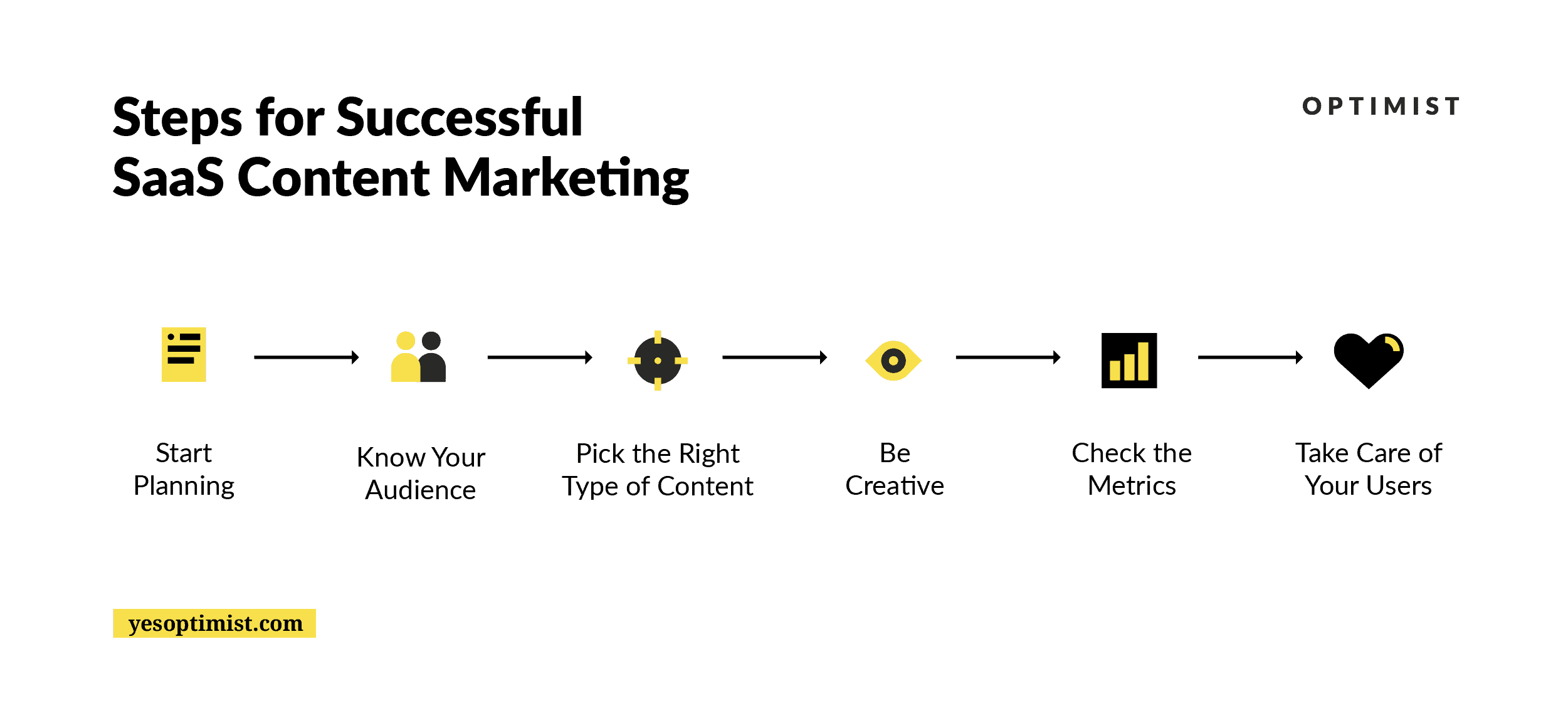
1. Start Planning
All these SaaS content marketing examples show us that before starting to produce content, it is essential to define clear business goals that will feed into your content marketing strategy.
Content marketing takes time, you must be aware that a change in traffic cannot happen overnight. Sometimes it takes months, sometimes years.
If you have a clear roadmap of where you are going, it will help you keep the focus on your real objectives and avoid the distractions of experimenting several channels at once.
Be patient and your content marketing efforts will pay out.
2. Know Your Audience
Who are your potential customers? What are their needs?
All those SaaS content marketing examples showed us that it is very important to answer your user’s pain points or questions. If you don’t do that, then the chances that nobody reads your content, or takes a look at your videos are fairly high.
This is a very important step. It will require you to do in depth research to discover who your audience is, and more importantly what their pain points are.
3. Pick the right type of content
There are so many ways of putting content out there. You can use your social media platforms, or maybe if you are famous enough, reach out to influencers to promote your product or brand.
You can create a blog and post content around relevant keywords that will attract the type of audience you want to reach.
The types of content vary also very much depending on the intent of the visitor. You can go for an article or something more visual in the form of a video or maybe a graphic. You could also choose to go live through a series of webinars, interacting directly with your targeted audience.
It is not always easy to know who you are writing for and what you want to write.
Here is a little something that might help you decide who your audience is and what type of content might be relevant to them.
Start by going through a process to understand what your product use case is for all the different audiences. What are the steps they follow when using your product, and what could their pain points be. A good way to grab these concepts is also by encouraging your users to share testimonials. Positive reviews are free ads, and negative reviews encourage you to better improve your product for your targeted customers.
4. Be creative
Creativity does pay off. However, be sure to do it right. If you go over the top, it might be perceived as too much and your audience might not recognize themselves in the image you are trying to sell.
It is really important to try and grab the audience’s attention, before trying to take them on a journey into your product.
So once, you have decided on the path you want to take on the creative side. You’ll need to map out all the steps you have to follow and set up a content calendar for the upcoming weeks or months.
5. Check the metrics (using aHrefs and Analytics)
Once the content has been produced and sent out there, it is not the end.
You need to track your content’s progress, in order to better understand why some of the pieces are performing well and why others are not.
Checking the metrics and KPIs, using SEO and keyword tracking tools such as aHrefs, Semrush and Google Analytics, you should be able to find out what the winning formula is for your website and type of audience.
Obviously this might take time, the best way is to experiment and adapt based on the results.
Want to learn how to efficiently keep track of the metrics? Check out this piece of content on How to Measure & Track Content Marketing KPIs Without Getting Distracted.
6. Take care of your users
You might think that a user one day is always a user. However this is not true, particularly in the SaaS environment, where you see a new startup coming out of the ground every day.
Customer relationships are not always easy to tackle and you must be sure to take good care of your users if you don’t want them to leave you for one of your competitors.
Showing your users that you are providing them with a good solution is good but it’s not enough.
You should also make sure they feel well treated and surrounded by professionals that can really help them. A chat bot is good but it needs to be supplemented by a real person who is actually a thought-leader within the company. Offering a better support system for the customer should increase your customer retention rate overall.
Applying this to SaaS content marketing, new pieces of content could then be added to the calendar, in order to provide customers with solutions to their problems.
How To Build A SaaS Content Marketing Strategy?
Let’s summarize everything that we learnt by studying these SaaS content marketing examples.
The first step would be to create a bullet-proof content marketing strategy or content marketing plan.
It should be bulletproof, because as mentioned previously content marketing takes time. If you want to take the most out of your digital marketing campaigns, it is important to stick to the same saas marketing strategy for a fairly long period of time.
If you keep changing the way you want to approach content marketing for your SaaS business, then you’ll most certainly reach a dead end.
Then you’ll want to decide the type of content you want to create. This question is partially answered once you have a good idea of the targeted audience.
Indeed, based on this specific audience’s needs, you shall be able to define whether you need to produce a long educational article, focus on a case study, maybe write a thought leadership piece of content or an informational page such as a whitepaper.
Finally, you’ll want to assess the content once it has been published, in order to learn from your own best practices or mistakes. If an article could benefit from an optimization, even several months after it was published, don’t be shy, go for it!
Same goes for the infographics. If you come to realize that there is a better way to convey an idea, rather than using text all along. Get in touch with your designer and get that infographic online. If it’s thoughtful and conveys important information to your reader, then it will add value to your piece of content and website.
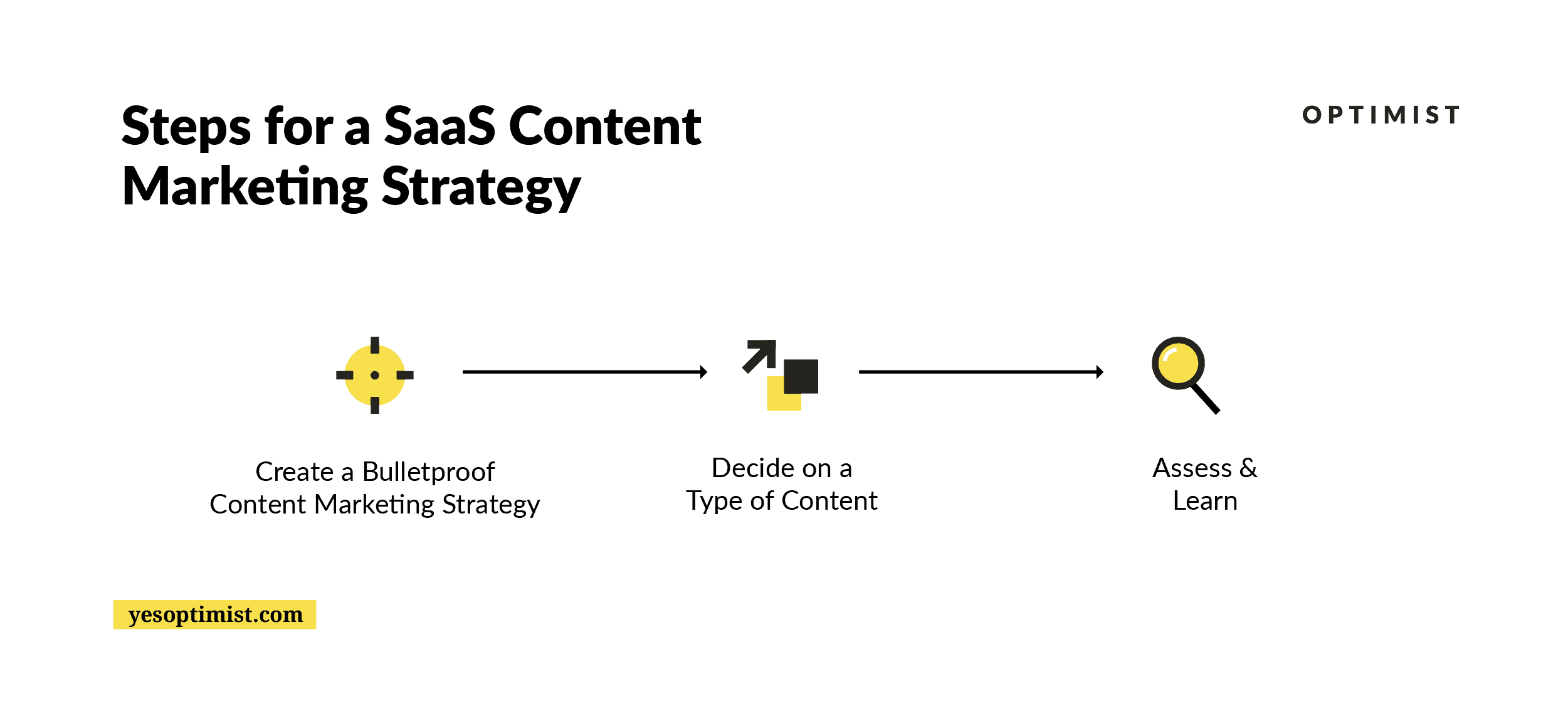
Now, you know all the secrets, time to get to work.
But don’t panic, if you feel overwhelmed or need help with setting up your content marketing strategy, you can ask a content marketing agency, such as Optimist, for help.
We are a growth-focused content marketing agency for SaaS companies, so feel free to reach out any time.
Get more kick-ass content from us
Subscribe to our email list and get regular updates.
No spam or BS. Just great, insightful articles.